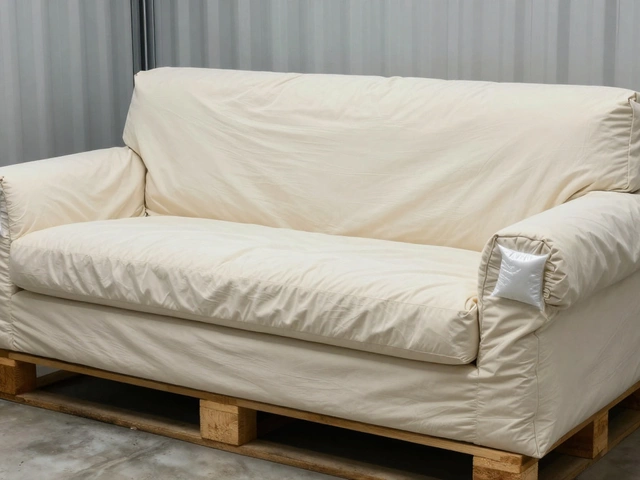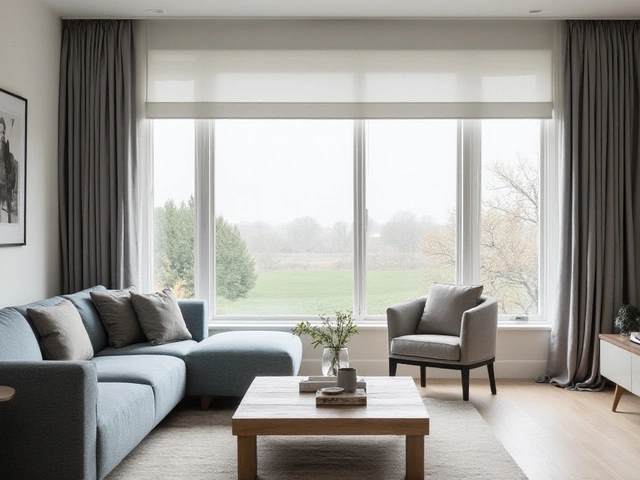Every friend group has that one guy who’s slept on every type of makeshift bed out there—floor mats, worn-out sofas, kids’ bunk beds, and yes, the classic sofa bed. Here’s the thing that always gets people talking: is sleeping on a sofa bed actually bad for your back or is it just an urban legend fueled by old sitcoms and horror stories from relatives? There’s a reason folks wake up groaning—or in some cases, grateful it didn’t collapse with them still on it. Let’s unpack what’s really happening to your back when you choose the sofa bed over an actual mattress.
What Happens To Your Back When You Sleep On a Sofa Bed?
Imagine your spine as a row of delicately balanced blocks—when you sleep, your mattress is supposed to keep those blocks stacked neatly. Now, swap your supportive mattress for a thin, foldable sofa bed mattress with a metal bar underneath. Most sofa beds just don’t give your spine the same love and support as a real mattress. A study done at Harvard Medical School in 2023 actually showed that over 60% of participants reported increased back discomfort after three nights on common sofa bed designs compared to regular mattresses. That’s no small number.
But it’s not just about discomfort; a poorly supported back overnight can send your spine out of alignment. When your back sags into the gap between sofa cushions or rests on a jutting metal bar, you put uneven pressure on the muscles and discs in your back. The result? Stiffness, soreness, and in some cases, shooting pain upon waking. Doctors say that if you have a history of lower back pain—like me after too many pickup basketball games—sleeping on a sofa bed can make things a lot worse. Even if you’re healthy, that kind of odd positioning isn’t great for long stretches.
Surprisingly, it’s not just about the thinness of the mattress. The folding mechanism creates uneven surfaces that don’t let your hips and shoulders naturally sink, which your spine relies on for proper alignment during sleep. Ever notice how you always seem to roll into the crack where the bed folds? That little valley doesn’t do your lower back any favors either. If you’re planning an extended stay on a friend’s sofa bed—think more than a night or two—your body is likely to revolt.
The Harvard study also broke things down by age. Young adults bounced back from a bad night’s sleep faster, but anyone over 35 reported more pronounced aches, and recovery took longer. So, while teens might grumble a little, their backs usually don’t hold a grudge. But as you get older, the risk for a lingering soreness goes up. If you add a fidgety pet—like my dog Rocky—to the foot of the bed, that battle for a flat spot doubles the challenge.
Why Sofa Beds Aren’t Built for Healthy Sleep
The main culprit is the design. Sofa beds are built to save space and multitask—they’re sofas by day and fold-out beds by night. That compromise means sacrificing the thick, even support a normal mattress offers. Most models use slim foam pads, anywhere from two to four inches thick, which doesn’t give your body enough cushioning. Studies conducted by the American Chiropractic Association showed sofa bed mattresses lost 20% of firmness and support after a single year, twice as fast as regular mattresses.
What really gets your back in trouble, though, are those infamous support bars. Ever woken up with a perfectly straight red line running across your hip? Congratulations, you’ve met the enemy. These bars create pressure points, so parts of your back and hips are forced to absorb more weight without relief. That uneven pressure leads to those nagging aches that just don’t go away during the day.
Another problem is the bed’s surface area. Regular mattresses let your full body stretch out, so your muscles can relax. Sofa beds generally shrink your space because of armrests or a shorter frame. Can’t stretch out fully? Your posture is already at a disadvantage before your head even hits the pillow. If you’re tall—or just like to starfish in your sleep—you’ll have an even tougher time finding a comfy position.
Airflow is also a factor. The slim design of sofa beds means more pressure on your back and less ventilation, so you’re likely to get sweaty and move around more to cool down. That shifting disrupts your sleep cycles, so you don’t get the same restful, deep sleep you’d get in a real bed. And as several sleep experts have shown, poor sleep quality from tossing and turning is tightly linked to muscle soreness and chronic pain down the line.
| Feature | Standard Sofa Bed | Typical Mattress |
|---|---|---|
| Mattress Thickness | 2-4 inches | 10-14 inches |
| Average Support Lifespan | 1-3 years | 7-10 years |
| Edge Support | Poor | Good |
| Spine Alignment | Often Poor | Usually Good |
| Ventilation | Minimal | Optimal |
If you’re using a sofa bed regularly, it might help to rotate the mattress or add a mattress topper, but at the end of the day, you’re just patching up a design that was never meant for long-term sleep, especially if your back needs reliable support.

Do Some People Handle Sofa Beds Better Than Others?
Not everyone wakes up cursing the sofa bed. Genetics, body weight, and even sleep habits play a role in how you’ll handle a night on one. If you’re a back sleeper, you might do a little better, because the pressure gets spread out, but side sleepers or stomach sleepers usually get the short end of the stick. That’s because those thin mattresses and pokey bars create sharper pressure points just where you don’t need them.
Kids and young adults typically have more forgiving muscles and joints. Their bodies handle weird sleeping surfaces better, though that doesn’t mean it’s ideal. If you’re athletic or exercise a lot, your muscles are used to repairing damage, so a rough night is just a setback, not a crisis. Still, if you have chronic pain, herniated discs, or arthritis, even a night or two on a sofa bed can quickly spiral into lasting back issues.
Some people have found ways to cope. Friends who regularly travel for work—crashing on couches and pullouts—swear by memory foam toppers. They roll one up in their suitcase and throw it on top of whatever disaster of a bed they’re given. It evens out some of those pressure points and adds a layer of insulation against cold nighttime metal rails. Others pile up thick blankets and duvets underneath, basically DIYing a softer landing spot. It’s not a miracle cure, but it definitely takes the edge off.
Another quirk—sleeping with a pet like Rocky. He tries to sneak up and snuggle, which is adorable until he steals half the available space. If you end up curled around a ball of fur, you might wake up even more bent out of shape. Making space for pets on a small sofa bed forces you into awkward positions, cranking up that pressure on your hips and lower back. On the flip side, if Rocky keeps me from rolling right into the dreaded mattress valley, maybe he’s doing my spine a favor after all.
Travelers sometimes say their backs feel fine on night one, but after two or three nights, all bets are off. It’s like your spine uses up a bank of forgiveness points, and once they’re gone, it’s payback time. If you get stuck on a sofa bed for a week—say, during a family reunion or as your own bed in a tiny apartment—it’s smart to pay attention to those first hints of soreness and change up your sleep setup sooner rather than later.
Tips for Surviving (and Improving) a Sofa Bed Night
So, what if you’re stuck with the sofa bed anyway? Maybe you’re staying at your mother-in-law’s, or your own apartment is tiny, and a proper bed just won’t fit. There are a few simple tweaks that can help make your night bearable—or even pretty decent.
- Use a mattress topper: Memory foam or thick egg crate toppers can make a world of difference. The extra cushion smooths over those metal bars and evens out pressure points.
- Layer blankets under the sheet: If you have no topper, fold thick quilts or sleeping bags underneath for extra padding. Even beach towels can help if you’re desperate.
- Align your spine: A small pillow under your knees (if you’re a back sleeper) or between your knees (if you’re a side sleeper) keeps your hips and lower back lined up properly.
- Check for a bar under the mattress: If you find a metal bar causing discomfort, put a folded yoga mat or a thick blanket directly over it.
- Stretch in the morning: Gentle morning stretches or light yoga can help loosen tight muscles and get your spine back in shape.
- Try to switch sleeping positions: If you feel pain on one side, roll to the other. Mixing things up may help distribute pressure more evenly.
- Don’t forget to hydrate: Dehydrated muscles cramp easier, so drink a glass of water before bed and first thing when you get up.
If you’re using a sofa bed regularly because your home is tight on space, look into thicker replacement mattresses designed for sofa beds. Companies now sell five- or even six-inch memory foam options that fit sofa frames and massively upgrade your sleep. They’re still not as perfect as a true mattress, but your back will thank you.
Got guests? Give them these tips so they don’t wake up swearing the next morning. I always stash a spare foam topper in the closet for emergencies. If your friends ask for it, they probably know what’s up.
The bottom line? If you have back problems or sensitive joints, it’s best to avoid regular nights on the sofa bed. But with the right hacks, you can survive a night or two with your spine mostly intact—and maybe still have room to let your dog crash with you, too (just not on a Monday morning after he’s been chasing rabbits all weekend).




